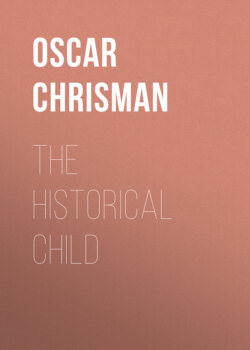Читать книгу The Historical Child - Oscar Chrisman - Страница 5
Women and Marriage.
ОглавлениеThe women were described by the Spaniards as being pretty, with long black hair, and with a serious and rather melancholy cast of countenance. It would appear that they were treated with much consideration by the men who permitted them to engage in festivities and entertainments equally with themselves.
Marriage was an important institution with the Mexicans and it was held in such high esteem that there was a tribunal appointed for the sole purpose of attending to matters relating to it. The customary age with men for marriage was about twenty, women marrying at a younger age. When a young man reached this age it became his duty to marry and sometimes the high priest commanded it of him. The selection of the bride was made by the parents and if a young man refused to abide by his parents' decision and made his own choice, he was looked upon as being quite ungrateful to his parents. Should he refuse to marry, it was his duty to remain continent through his life and devote himself to the service of the gods. Should he afterward decide to marry, he was despised by his friends and publicly denounced for not keeping his vow to the gods and no respectable woman would marry him.
When the parents had decided it was time for their son to marry, all the relatives were called together and a feast given at which the father announced to them that the son was of proper age to be married. The son was then informed that his parents were about to select a bride for him, to which the young man gave consent. Then they called in the priests under whom the young man had received his education and their permission was obtained and one of the priests addressed the young man with advice for the occasion. The next step was to ascertain the day and sign of the young man's birth and also the birthday and sign of the young woman, which was obtained through astrologers or soothsayers. If the horoscopes of both were favorable and showed that the union would have good fortune all was well; if not, another girl had to be selected. If the augurs were favorable to the union, two discreet and virtuous elderly women were called in as go-betweens. These women were given their directions and they called upon the parents of the bride and after a second visit preliminaries were arranged.
The parents of the girl then called in the relatives and friends and informed them of the affair and the girl was given much advice by them. Then their decision was sent to the parents of the young man. A favorable day for the marriage was found by the augurs and both families made preparations for the day of marriage and sent out invitations to relatives and friends. On the day set for the marriage the relatives and friends of the bride went to her home as did also some of the bridegroom's relatives and friends and in procession escorted her to his home, where the best room in the house had been fitted up for the occasion and the house festooned with green branches and garlands of flowers. The bridegroom met the bride at the entrance to his home and took her by the hand and led her into the room for the ceremony. They were then seated upon a special mat, the woman at the left of the man. The mother of the bridegroom gave presents to the bride and the mother of the bride gave presents to the bridegroom. Then the priest made a long talk to the couple, defining their duties to one another and toward the married state. The couple then arose and the priest tied the end of the man's mantle to the dress of the woman. A feast was then partaken of but in which the couple did not participate as they were required to spend four days in fasting and prayer in the room, closely guarded by old women. Upon the fourth night two priests prepared a couch of two mats and the young people were left to themselves. The next day they underwent a baptismal ceremony and they were adorned with new apparel and some more advice was given them by the mothers-in-law or nearest relatives, another feast was given of which they partook, and the marriage ceremony was then fully completed.
Cousins were allowed to marry but not nearer relatives. As a rule a widow was not permitted to remarry except a brother of her deceased husband and in case she had children by the first marriage, then it was the duty of the brother-in-law to marry her that the children might not be without the care and protection of a father. Divorce was allowed but only after a careful hearing by the tribunal on marriage, and when a divorce was granted the couple could not under any circumstances be reunited. Concubinage was practiced and it might occur even with young people under marriageable age upon the consent of the parents. In this there was no contract or ceremony, the two simply living together. In case a child was born to them a marriage was performed or else the woman returned to her parents' house, taking the child with her which was then considered as belonging to her parents. This was not considered dishonorable on the part of the girl nor were her chances for marriage in any degree lessened by her having thus lived in a state of concubinage. Polygamy was permitted but perhaps it was not greatly indulged in and it was chiefly among the wealthiest people. The necessity for monogamy seemed to be understood, as a record is given of a father counselling his son that for the proper perpetuation of the race but one man is ordained but for one woman.
